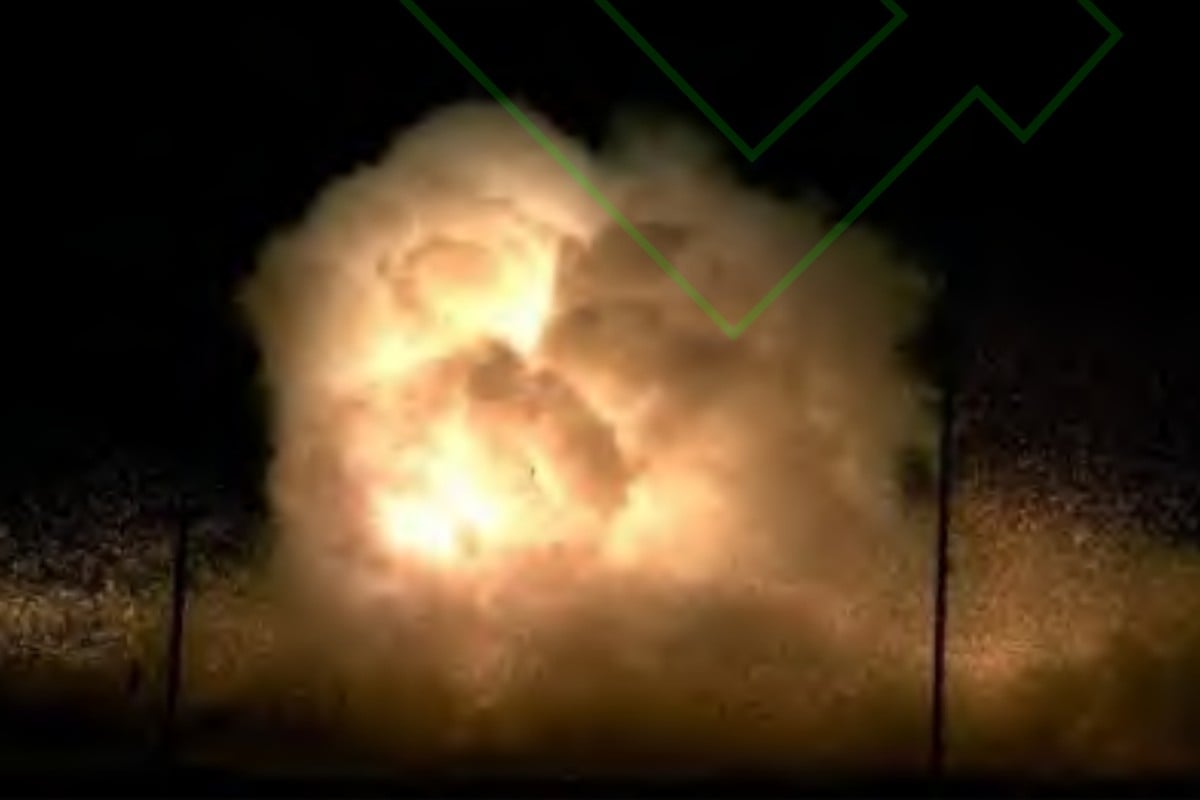SOURCE: AFI


On April 20, 2025, China’s People’s Liberation Army (PLA) announced a successful test of a non-nuclear hydrogen bomb, developed by the China State Shipbuilding Corporation’s (CSSC) 705 Research Institute. This 2-kilogram device, utilizing magnesium hydride, generated a fireball exceeding 1,000 degrees Celsius for over two seconds—15 times longer than a comparable TNT blast—capable of melting aluminum alloys and causing extensive thermal damage.
The test, detailed in the Journal of Projectiles, Rockets, Missiles and Guidance, signals China’s advancements in clean-energy weaponry and its strategic posturing amid tensions with Taiwan and the United States. For India, this development raises critical security concerns, necessitating a multifaceted response to safeguard national interests and maintain regional balance. Here’s how India should respond.
India must prioritize a comprehensive assessment of the hydrogen bomb’s capabilities and potential deployment scenarios. The device’s ability to deliver precise, high-intensity thermal damage over large areas, as noted by CSSC scientist Wang Xuefeng, suggests applications in anti-armor, anti-electronics, and area-denial operations. India’s Defence Research and Development Organisation (DRDO) and intelligence agencies, including the Research and Analysis Wing (RAW), should collaborate to analyze the weapon’s technical specifications, production scale, and integration into PLA strategies, particularly along the Line of Actual Control (LAC).
Given China’s new Shaanxi facility producing 150 tonnes of magnesium hydride annually, India must enhance its intelligence-gathering capabilities to monitor CSSC’s activities and supply chains. Satellite surveillance, cyber intelligence, and human intelligence networks should be leveraged to track advancements in China’s dual-use hydrogen technologies, which are also being explored for submarine fuel cells and long-endurance drones. This will enable India to anticipate potential threats and develop countermeasures.
To counter the thermal and blast effects of the hydrogen bomb, India should accelerate the development of advanced defense systems. The DRDO’s ongoing projects, such as the Ballistic Missile Defence (BMD) system, should be expanded to include protection against non-nuclear high-energy weapons. Research into heat-resistant materials and electromagnetic pulse (EMP)-hardened electronics is critical, as the bomb’s intense heat could disrupt military hardware and infrastructure along the LAC.
India’s Integrated Guided Missile Development Programme (IGMDP) should prioritize precision-guided munitions and long-range hypersonic missiles to deter Chinese aggression. The recent test of a long-range hypersonic missile, with a 3,000–4,000 km range, enhances India’s strategic deterrence, but production and deployment must be scaled up. Additionally, India should invest in counter-drone technologies, given China’s exploration of hydrogen-powered drones, which could extend the PLA’s reach in contested border areas.
China’s hydrogen bomb test underscores the importance of clean-energy technologies in modern warfare. India must bolster its research into hydrogen-based systems, both for military and civilian applications. The DRDO, in collaboration with the Indian Space Research Organisation (ISRO) and private sector firms like Tata and Reliance, should explore solid-state hydrogen storage materials like magnesium hydride for potential use in fuel cells, drones, and next-generation explosives. India’s recent advancements in green hydrogen production, supported by the National Hydrogen Mission, provide a foundation for such efforts.
To match China’s production capabilities, India should establish dedicated facilities for high-capacity hydrogen material synthesis, ensuring safety and cost-effectiveness. Partnerships with academic institutions like the Indian Institute of Science (IISc) can accelerate innovation in nanotechnology and energy storage, reducing reliance on foreign supply chains vulnerable to Chinese dominance in rare earths and critical minerals.
The test’s timing, amid heightened U.S. support for Taiwan and China’s maritime drills in the South China Sea, suggests a broader strategic message. India must strengthen its diplomatic outreach to counter China’s regional assertiveness. Deepening defense ties with Quad partners—particularly the United States and Japan—can facilitate technology transfers and joint exercises to enhance interoperability against advanced threats. The Quad’s focus on emerging technologies, including AI and quantum computing, should be leveraged to develop countermeasures to China’s hydrogen-based weapons.
India should also engage with ASEAN nations and Taiwan to build a coalition against Chinese expansionism. While India maintains a cautious stance on Taiwan due to its One China policy, backchannel dialogues can explore cooperation in semiconductor supply chains and cybersecurity, given Taiwan’s critical role in global chip production. Such partnerships can mitigate risks posed by China’s technological advancements and ensure supply chain resilience.
The hydrogen bomb’s potential use in high-altitude or border conflicts necessitates robust border security measures. India’s deployment of SATCOM-enabled Remotely Piloted Aircraft (RPAs) along the LAC, equipped with high-resolution sensors and AI-driven analytics, should be expanded to detect and neutralize threats early. The Comprehensive Integrated Border Management System (CIBMS), already operational along parts of the India-Pakistan border, should be adapted for the LAC with seismic sensors and micro-Doppler radars to counter unconventional weapons like the hydrogen bomb.
The Indian Army’s recent rollout of 4G and 5G networks in remote Ladakh border areas enhances real-time communication and situational awareness, critical for responding to rapid-deployment weapons. Fortifying forward bases with EMP-shielded infrastructure and heat-resistant bunkers will further protect troops from thermal attacks.
NOTE: AFI is a proud outsourced content creator partner of IDRW.ORG. All content created by AFI is the sole property of AFI and is protected by copyright. AFI takes copyright infringement seriously and will pursue all legal options available to protect its content.